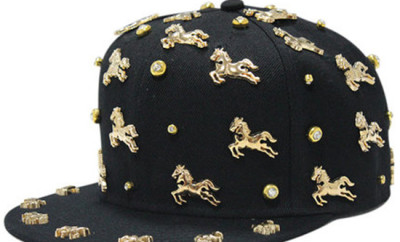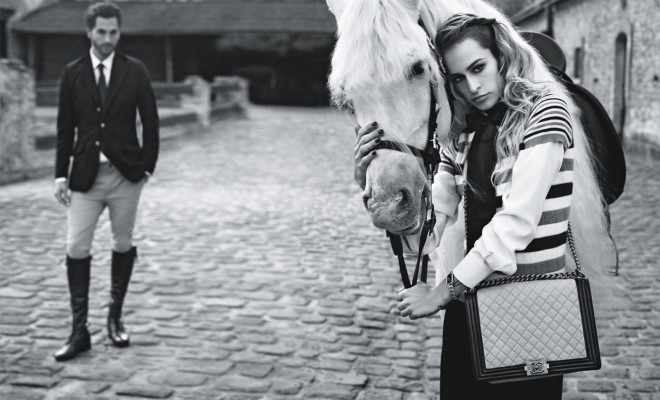
‘Coco’ Chanel and revolution of equestrian fashion
For many years horse and woman were very distant. Steeds were only an indirect way of transport for the ladies, when they carried a carriage or barouche. Contact with a horse was ment only for the men, who were taught the equestrian art from early childhood, so they could move in the future, travelling on the horse’s backs, being able to team or to entertain themselves while hunting.
As time went, the woman’s position started to change and strengthen – from a delicate, depending on her husband or father being, she transformed into an independent, self-conscious unit, able to make her own decisions and professional job. The result of such changes was rapidly growing interest in horse riding among women.
Until the 14th century, ladies (as well as priests and children) travelled only in the so-called chair sears, in which they had to sit sideways, and their feet were not in the stirrups, but on a special board. Steering the horse and riding at a gait faster than walk was absolutely impossible.
Next, ladies’ saddles became appearing, they allowed for full freedom of steering the horse and riding at all three gaits. The old fashion did not allow the women to wear trousers, at the same time forbidding them to ride like men. Thus, the ladies’ saddles were supposed to allow them to ride in dresses – initially those casual they wore every day. Soon dresses designed solely for horse riding appeared – with long back and sewn weights so that the wind would not reveal anything that was underneath them.

Ladies’ horse riding outfit from the beginnings of the 20th century, source: julia-kostina.livejournal.com
Gabrielle ‘Coco’ Chanel
It was not until Gabrielle “Coco” Chanel, the French fashion queen, that the equestrian fashion canon was revolutionised at the beginning of the 20th century.
“I gave women a sense of freedom,” she once said. I gave them back their bodies, bodies that were drenched in sweat due to fashion’s finery: lace, corsets, underlothes, padding.”
In the past few years, many biographies about Chanel’s life and inspirations were released. However, each one of them omit the huge influence of equestrianism, which was an inspiration for many of her iconic designs. What is more, it also influence the way women dress today.
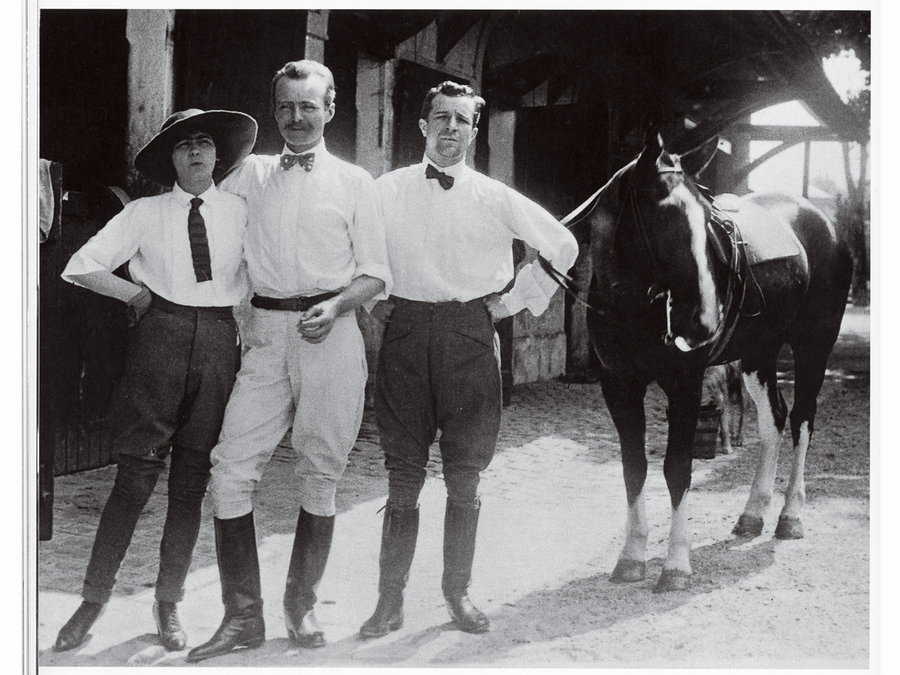
Gabrielle Chanel with Etienne Balsan in Royallieu, 1909, source: elle.co
Chanel got accustomed to the horse riding arcana by Étienne Balsan – an influential cavalry officer, gentleman and millionaire. He had a racing bloodstock industry and keen player of polo. Living in Balsan’s estate, Chanel was capable of spending her time on equestrianism that was a symbol of belonging to the upper social class. Despite being introduced to the horse’s world late, she became a fierce fan of horse racing. The relationship with Balsan made it possible for Chanel to be around the French élite, which influenced her later career, “opening” a lot of doors for her.
Her devotion for horse riding and simple elegance caused Chanel to choose comfortable breeches, riding boots and jackets with basque over dresses and ladies’ saddle. The traditional male outfit with white shirt, jacket, vest, and trousers was adjusted so it would fit her feminine body. Coco Chanel changed the ladies’ equestrian fashion in 1920, designing her own breeches on the basis of male riders’ outfits that she was seeing every day.

Audrey Tautou as Gabrielle Chanel in the movie entitled “Coco Chanel” (2009), dir. A. Fontaine
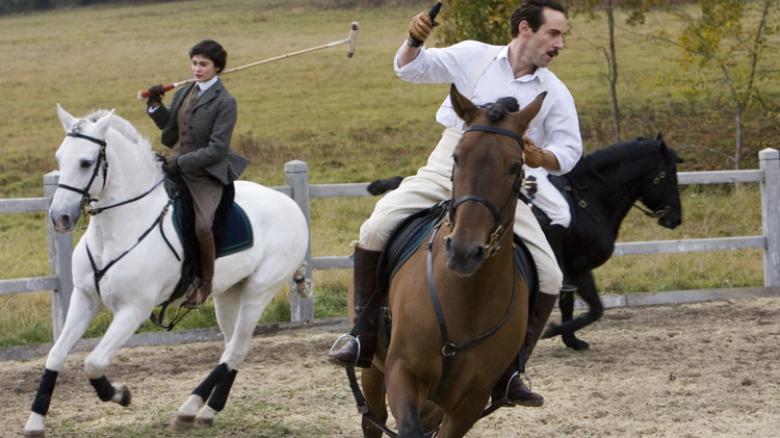
Audrey Tautou as Gabrielle Chanel in the movie entitled “Coco Chanel” (2009), dir. A. Fontaine
Reading about Gabrielle Chanel’s life you can stumble upon a trivia according to which she was late for a hunting trip. Nervous struggle with the skirts she was trying to put on the ladies’ saddle resulted in her “taking off” trousers of a stable boy, put a male saddle on her horse and departured at a canter with “naked legs”.
With her unconventional outfit and male style of riding, Coco was raising both huge interest and shock at men, but also common outrage among women. Probably it was her male and comfortable style of riding that contributed to the later Chanel’s fashion revolution.
First ‘Chanel’ shop
Due to the support of her close friends: Etienne Balsan and British athlete Arthur “Boy” Capel, in 1913 Chanel opened her first shop on Boulevard Malesherbes. She was selling hats and sport clothing, completely different from that promoted on the streets of Paris. They were mainly toques and cloches – hats in the shape of helmets. Her, for that time, really simple hats became successful and found buyers among the wealthy people. ‘Coco’s designs’ popularity and “Boy” Capel’s financial support allowed her to open another boutique in a tenement on Rue Cambon 21, in the Paris’ first quarter. Today, Chanel’s flagship boutique in Paris in pretty close, on Rue Cambon 31.
Gabrielle, whenever that was possible, based her designs on the principle of taking a male outfit and creating truly feminine cut of this, recreating it properly while maintaining its elegance, but making it as feminine as possible.
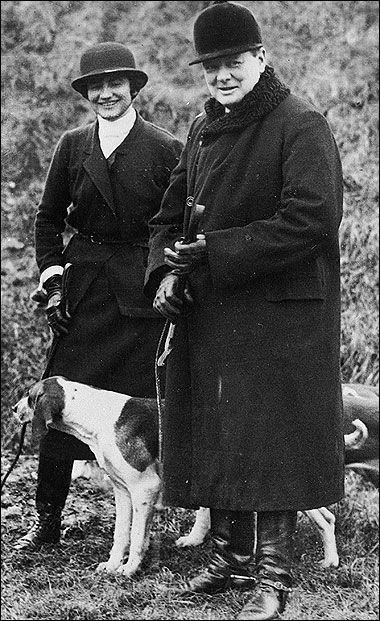
Gabrielle Chanel with Winston Churchill during hunting, source: mylusciouslife.com
The flagship example of using this principle are designed by ‘Coco’ breeches, shirts and jackets inspired by the male fashion, but also her shirtdress. According to a legend, Gabrielle created it while taking part in less official competition. She decided that she is over-dressed and forced a man who was sitting nearby to give her his shirt. Since then, promoted by Chanel shirtdresses became extremely popular. It is a dress inspired by a male shirt, which in its basic version has buttons, cuffs, and collar. What differentiates it from the male shirt is its cut – it is well-fitting on top, and slightly flaring on the bottom.
The artist in her statements, highlighted many times that women should live actively, which is why her designs due to their simple cur, precise making and softness of fabrics guaranteed freedom of movement. Chanel won, proving that comfort can go hand in hand with beauty.
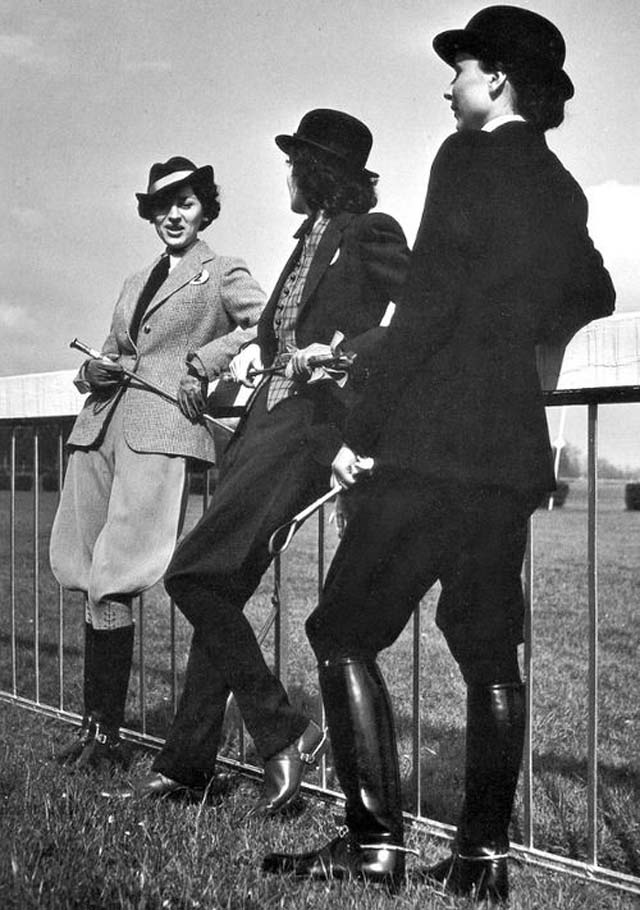
source: vintag.es
Reality of war
The first World War forced Paris women to flee from Paris to health resorts. It was in villa Larralde in Biarritz, where Chanel opened her first fashion house. There, she begun selling unique clothes inspired by male, sport and war fashion. Chanel was appealed by male clothes’ functionality, which in modified by her form, entered wardrobes of the working, learning and more and more conscious women.
During war, women were still wearing skirts. However, at that time, many women started wearing trousers and uniforms in their workplaces. Chanel, who loved wearing trousers and often borrowed suits from her boyfriend, traded upon the wide-spreading trend and started designing women’s trousers. Mainly for them to wear the trousers while doing sports or performing some other physical activities. Soon, trousers became a conscious choice of women, not only the necessity of war.

Vogue Session, showing the up-to-date cuts for horse riding (on the left: outift for a ladies’ saddle, on the right: outfit inspired by male fashion for riding astride), 1927, source: stylemyride.net
Return to equestrianism
After many years of ‘Coco’s death, Chanel returned to their equestrian roots, publishing the Chanel “Boy” campaing (season spring/summer 2013), which owes its name to Coco Chanel’s beloved one – Arthur “Boy” Capel. British model Alice Dellal took part in the photo session, and the very Karl Lagerfeld took the photos.
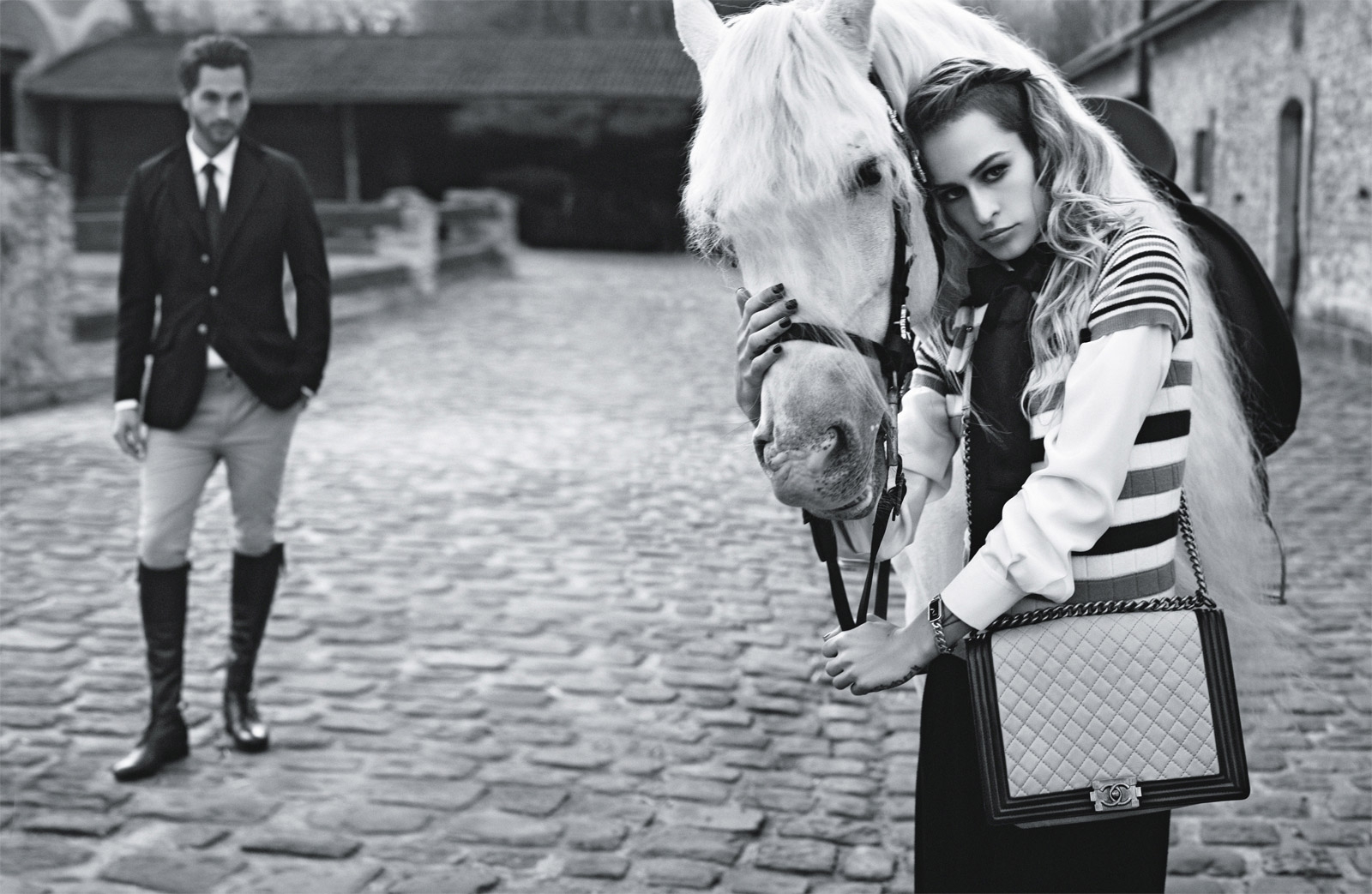
source: chanel.com

source: chanel.com
To sum up, it is an undebiable fact that Gabrielle Chanel as a fierce lover of horse riding, contributed to revolutionising the ladies’ equestrian fashion. ‘Coco’ placed women and men as equal in her designs, which contributed to popularising the “male” style of riding and clothing.
Today, we still benefit from her somewhat rebellious approach to horse riding. Equestrianism and all its disciplines remain the only olympic sport, in which women are in competition with men, and our outfits are generally the same.




